Sergo Jindariani
Applications and Techniques for Fast Machine Learning in Science
Oct 25, 2021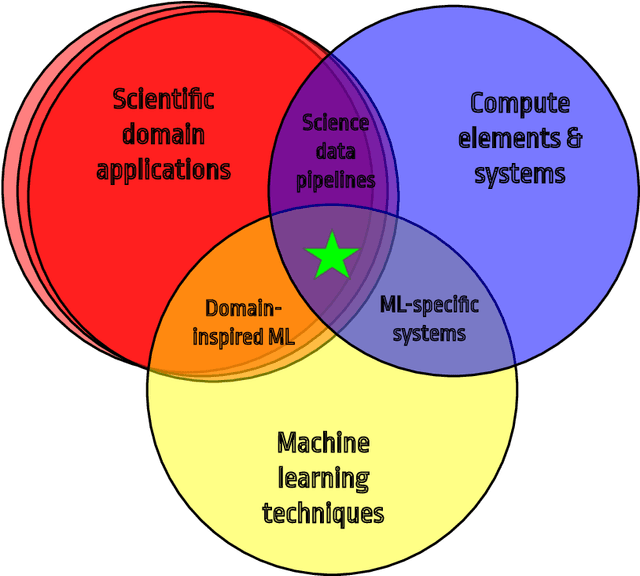
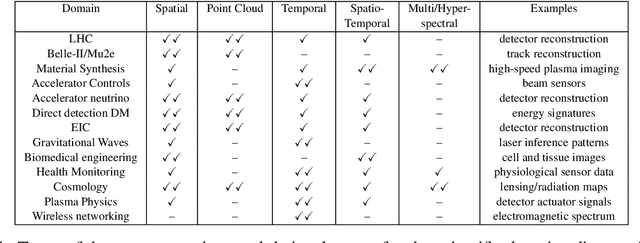
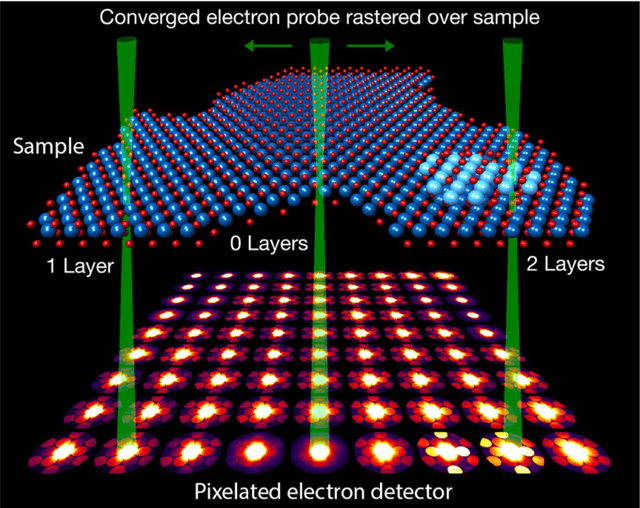

Abstract:In this community review report, we discuss applications and techniques for fast machine learning (ML) in science -- the concept of integrating power ML methods into the real-time experimental data processing loop to accelerate scientific discovery. The material for the report builds on two workshops held by the Fast ML for Science community and covers three main areas: applications for fast ML across a number of scientific domains; techniques for training and implementing performant and resource-efficient ML algorithms; and computing architectures, platforms, and technologies for deploying these algorithms. We also present overlapping challenges across the multiple scientific domains where common solutions can be found. This community report is intended to give plenty of examples and inspiration for scientific discovery through integrated and accelerated ML solutions. This is followed by a high-level overview and organization of technical advances, including an abundance of pointers to source material, which can enable these breakthroughs.
hls4ml: An Open-Source Codesign Workflow to Empower Scientific Low-Power Machine Learning Devices
Mar 23, 2021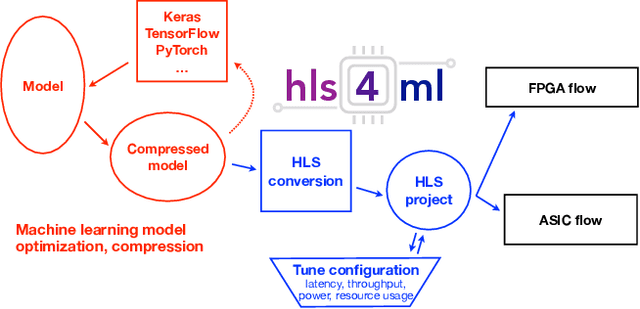
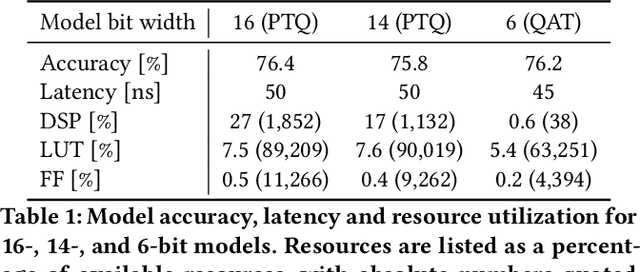
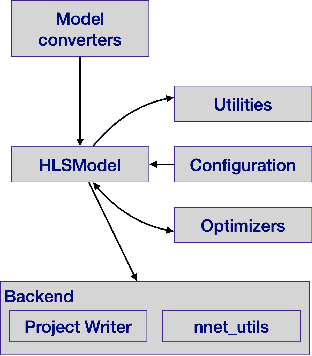
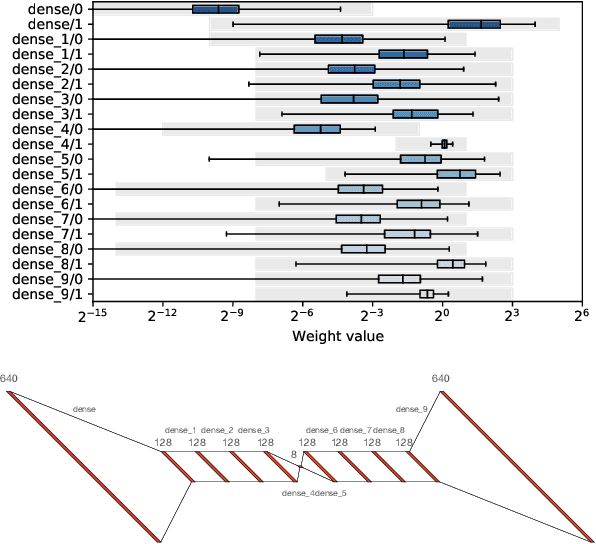
Abstract:Accessible machine learning algorithms, software, and diagnostic tools for energy-efficient devices and systems are extremely valuable across a broad range of application domains. In scientific domains, real-time near-sensor processing can drastically improve experimental design and accelerate scientific discoveries. To support domain scientists, we have developed hls4ml, an open-source software-hardware codesign workflow to interpret and translate machine learning algorithms for implementation with both FPGA and ASIC technologies. We expand on previous hls4ml work by extending capabilities and techniques towards low-power implementations and increased usability: new Python APIs, quantization-aware pruning, end-to-end FPGA workflows, long pipeline kernels for low power, and new device backends include an ASIC workflow. Taken together, these and continued efforts in hls4ml will arm a new generation of domain scientists with accessible, efficient, and powerful tools for machine-learning-accelerated discovery.
Fast convolutional neural networks on FPGAs with hls4ml
Jan 13, 2021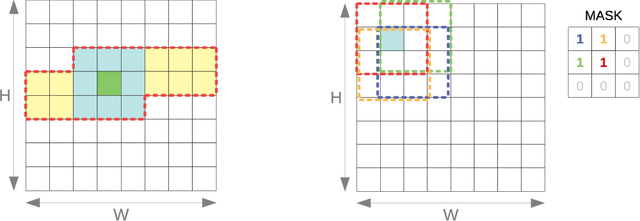

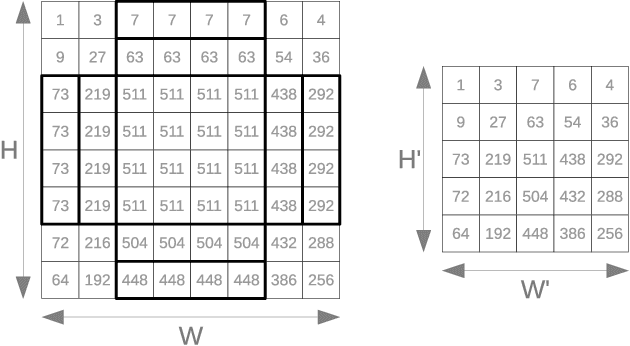

Abstract:We introduce an automated tool for deploying ultra low-latency, low-power deep neural networks with large convolutional layers on FPGAs. By extending the hls4ml library, we demonstrate how to achieve inference latency of $5\,\mu$s using convolutional architectures, while preserving state-of-the-art model performance. Considering benchmark models trained on the Street View House Numbers Dataset, we demonstrate various methods for model compression in order to fit the computational constraints of a typical FPGA device. In particular, we discuss pruning and quantization-aware training, and demonstrate how resource utilization can be reduced by over 90% while maintaining the original model accuracy.
Accelerated Charged Particle Tracking with Graph Neural Networks on FPGAs
Nov 30, 2020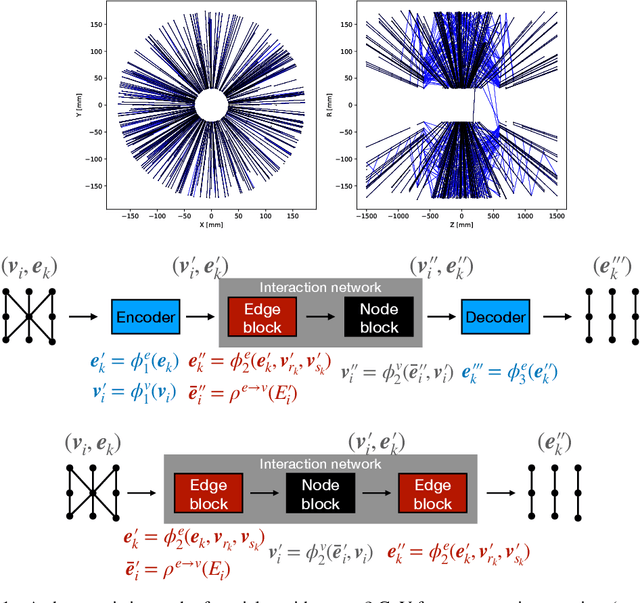



Abstract:We develop and study FPGA implementations of algorithms for charged particle tracking based on graph neural networks. The two complementary FPGA designs are based on OpenCL, a framework for writing programs that execute across heterogeneous platforms, and hls4ml, a high-level-synthesis-based compiler for neural network to firmware conversion. We evaluate and compare the resource usage, latency, and tracking performance of our implementations based on a benchmark dataset. We find a considerable speedup over CPU-based execution is possible, potentially enabling such algorithms to be used effectively in future computing workflows and the FPGA-based Level-1 trigger at the CERN Large Hadron Collider.
Distance-Weighted Graph Neural Networks on FPGAs for Real-Time Particle Reconstruction in High Energy Physics
Aug 08, 2020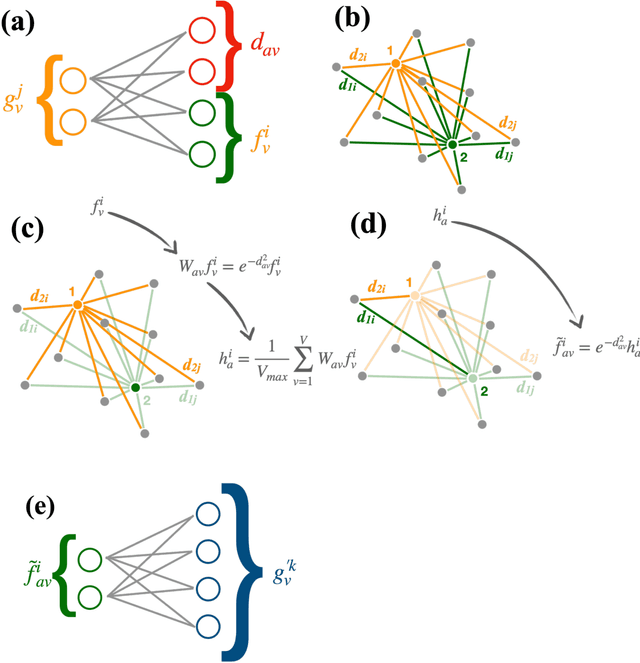

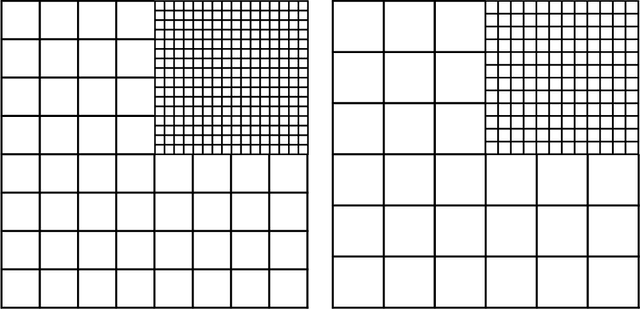
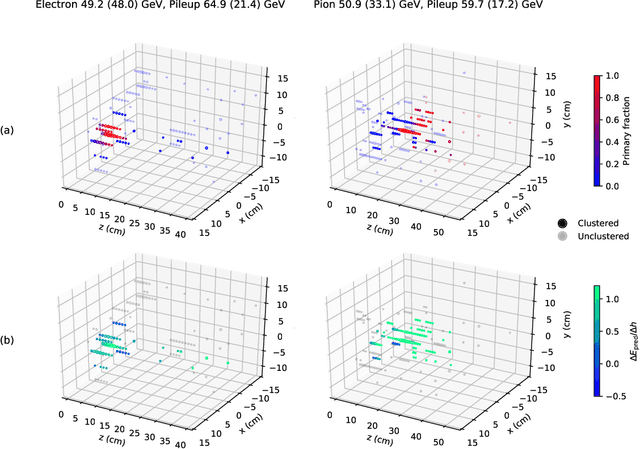
Abstract:Graph neural networks have been shown to achieve excellent performance for several crucial tasks in particle physics, such as charged particle tracking, jet tagging, and clustering. An important domain for the application of these networks is the FGPA-based first layer of real-time data filtering at the CERN Large Hadron Collider, which has strict latency and resource constraints. We discuss how to design distance-weighted graph networks that can be executed with a latency of less than 1$\mu\mathrm{s}$ on an FPGA. To do so, we consider a representative task associated to particle reconstruction and identification in a next-generation calorimeter operating at a particle collider. We use a graph network architecture developed for such purposes, and apply additional simplifications to match the computing constraints of Level-1 trigger systems, including weight quantization. Using the $\mathtt{hls4ml}$ library, we convert the compressed models into firmware to be implemented on an FPGA. Performance of the synthesized models is presented both in terms of inference accuracy and resource usage.
Compressing deep neural networks on FPGAs to binary and ternary precision with HLS4ML
Mar 11, 2020
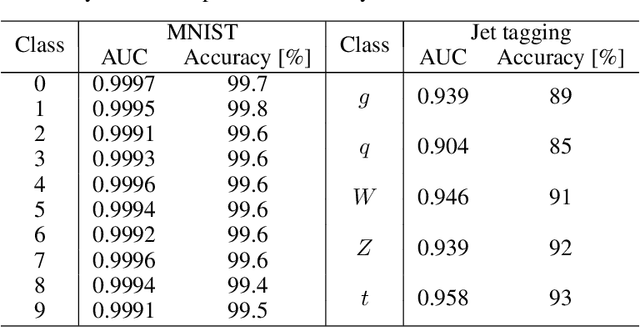
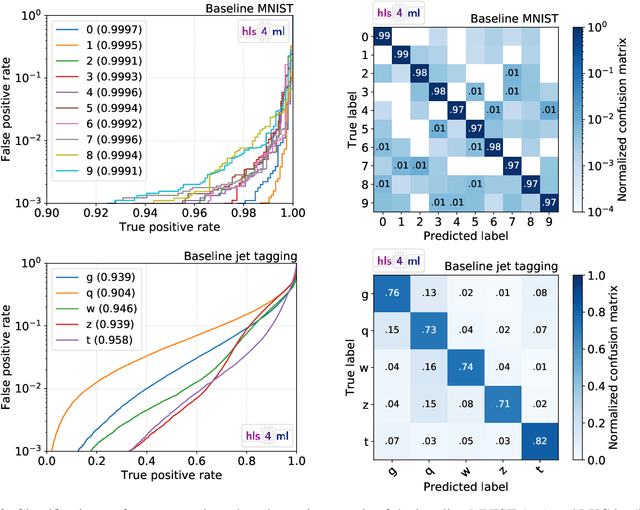

Abstract:We present the implementation of binary and ternary neural networks in the hls4ml library, designed to automatically convert deep neural network models to digital circuits with FPGA firmware. Starting from benchmark models trained with floating point precision, we investigate different strategies to reduce the network's resource consumption by reducing the numerical precision of the network parameters to binary or ternary. We discuss the trade-off between model accuracy and resource consumption. In addition, we show how to balance between latency and accuracy by retaining full precision on a selected subset of network components. As an example, we consider two multiclass classification tasks: handwritten digit recognition with the MNIST data set and jet identification with simulated proton-proton collisions at the CERN Large Hadron Collider. The binary and ternary implementation has similar performance to the higher precision implementation while using drastically fewer FPGA resources.
Fast inference of Boosted Decision Trees in FPGAs for particle physics
Feb 19, 2020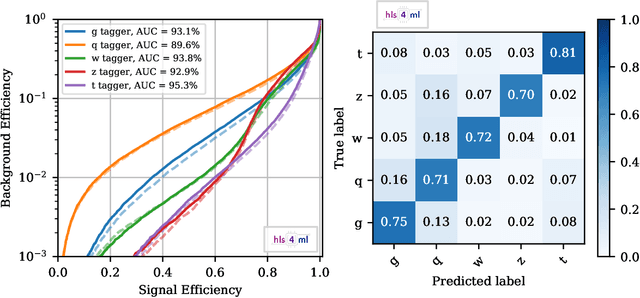

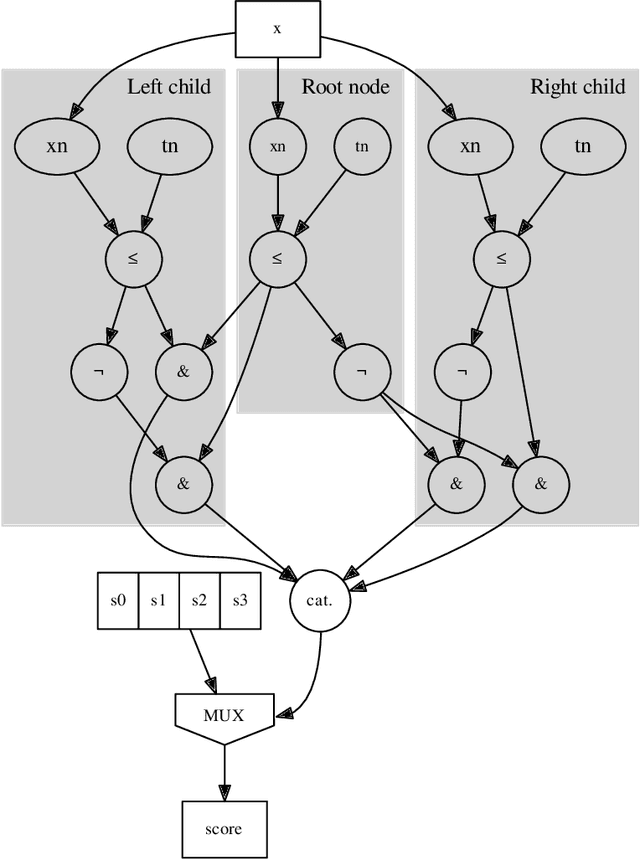
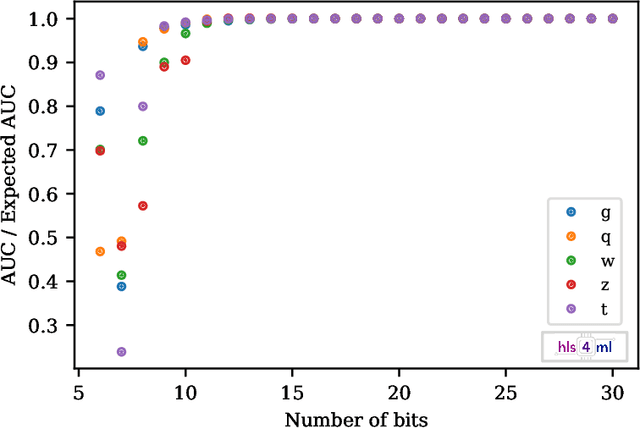
Abstract:We describe the implementation of Boosted Decision Trees in the hls4ml library, which allows the translation of a trained model into FPGA firmware through an automated conversion process. Thanks to its fully on-chip implementation, hls4ml performs inference of Boosted Decision Tree models with extremely low latency. With a typical latency less than 100 ns, this solution is suitable for FPGA-based real-time processing, such as in the Level-1 Trigger system of a collider experiment. These developments open up prospects for physicists to deploy BDTs in FPGAs for identifying the origin of jets, better reconstructing the energies of muons, and enabling better selection of rare signal processes.
Fast inference of deep neural networks in FPGAs for particle physics
Jun 28, 2018



Abstract:Recent results at the Large Hadron Collider (LHC) have pointed to enhanced physics capabilities through the improvement of the real-time event processing techniques. Machine learning methods are ubiquitous and have proven to be very powerful in LHC physics, and particle physics as a whole. However, exploration of the use of such techniques in low-latency, low-power FPGA hardware has only just begun. FPGA-based trigger and data acquisition (DAQ) systems have extremely low, sub-microsecond latency requirements that are unique to particle physics. We present a case study for neural network inference in FPGAs focusing on a classifier for jet substructure which would enable, among many other physics scenarios, searches for new dark sector particles and novel measurements of the Higgs boson. While we focus on a specific example, the lessons are far-reaching. We develop a package based on High-Level Synthesis (HLS) called hls4ml to build machine learning models in FPGAs. The use of HLS increases accessibility across a broad user community and allows for a drastic decrease in firmware development time. We map out FPGA resource usage and latency versus neural network hyperparameters to identify the problems in particle physics that would benefit from performing neural network inference with FPGAs. For our example jet substructure model, we fit well within the available resources of modern FPGAs with a latency on the scale of 100 ns.
 Add to Chrome
Add to Chrome Add to Firefox
Add to Firefox Add to Edge
Add to Edge